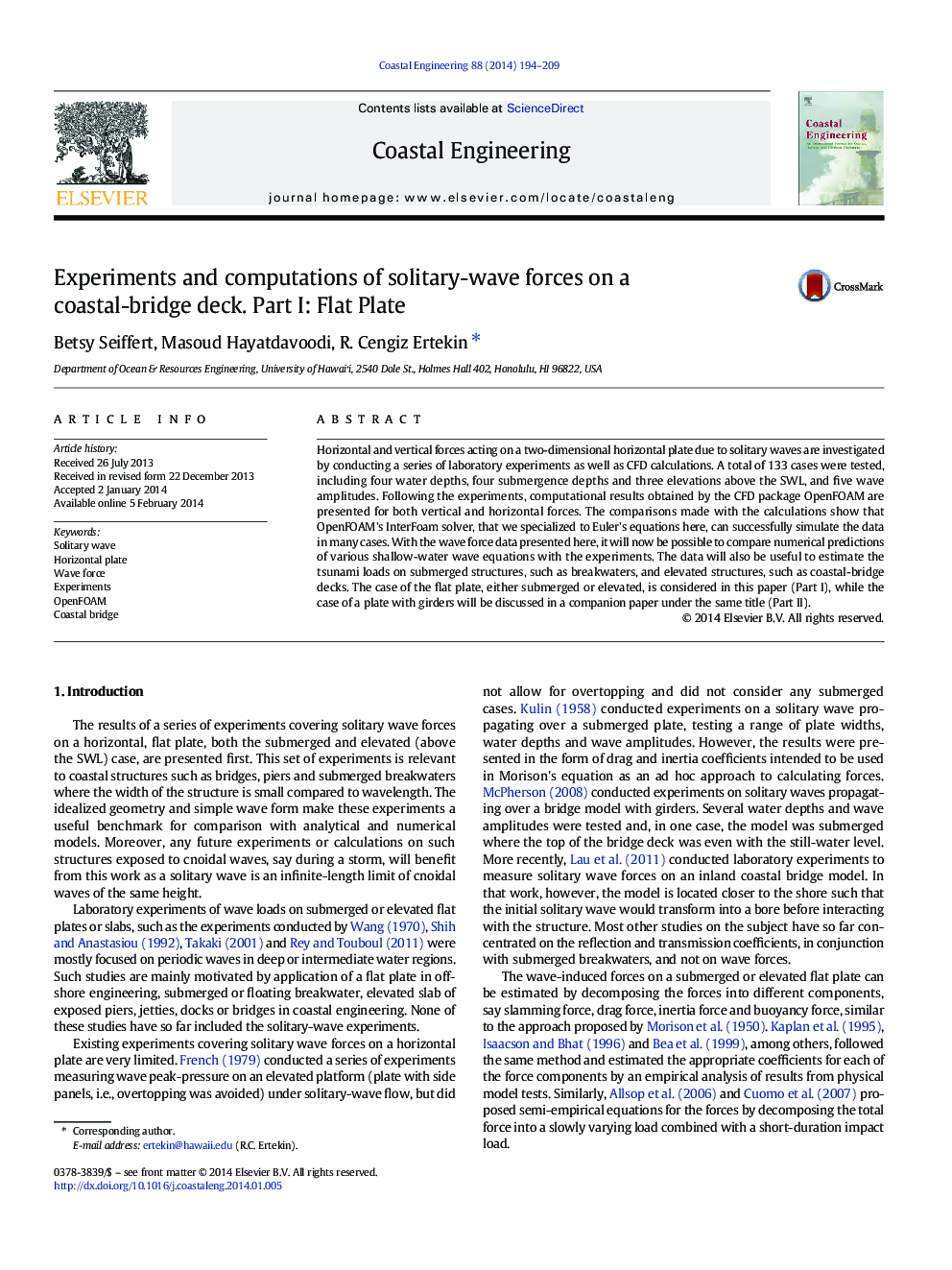| Article ID | Journal | Published Year | Pages | File Type |
|---|---|---|---|---|
| 1720780 | Coastal Engineering | 2014 | 16 Pages |
•Experiments are conducted to obtain the forces acting on a flat plate (idealized as the slab of a coastal bridge) when a solitary wave impinge on it.•Calculations are performed to obtain the same forces by use of the CFD program OpenFOAM and compared with the experimental data.•It is determined that forces on the plate are generally a linear function of the wave amplitude although the wave itself is completely nonlinear.•Submergence depth and the elevation of the plate and water depth are varied in this work. Such results can be used by bridge/costal engineers in the design of coastal bridges.
Horizontal and vertical forces acting on a two-dimensional horizontal plate due to solitary waves are investigated by conducting a series of laboratory experiments as well as CFD calculations. A total of 133 cases were tested, including four water depths, four submergence depths and three elevations above the SWL, and five wave amplitudes. Following the experiments, computational results obtained by the CFD package OpenFOAM are presented for both vertical and horizontal forces. The comparisons made with the calculations show that OpenFOAM's InterFoam solver, that we specialized to Euler's equations here, can successfully simulate the data in many cases. With the wave force data presented here, it will now be possible to compare numerical predictions of various shallow-water wave equations with the experiments. The data will also be useful to estimate the tsunami loads on submerged structures, such as breakwaters, and elevated structures, such as coastal-bridge decks. The case of the flat plate, either submerged or elevated, is considered in this paper (Part I), while the case of a plate with girders will be discussed in a companion paper under the same title (Part II).
